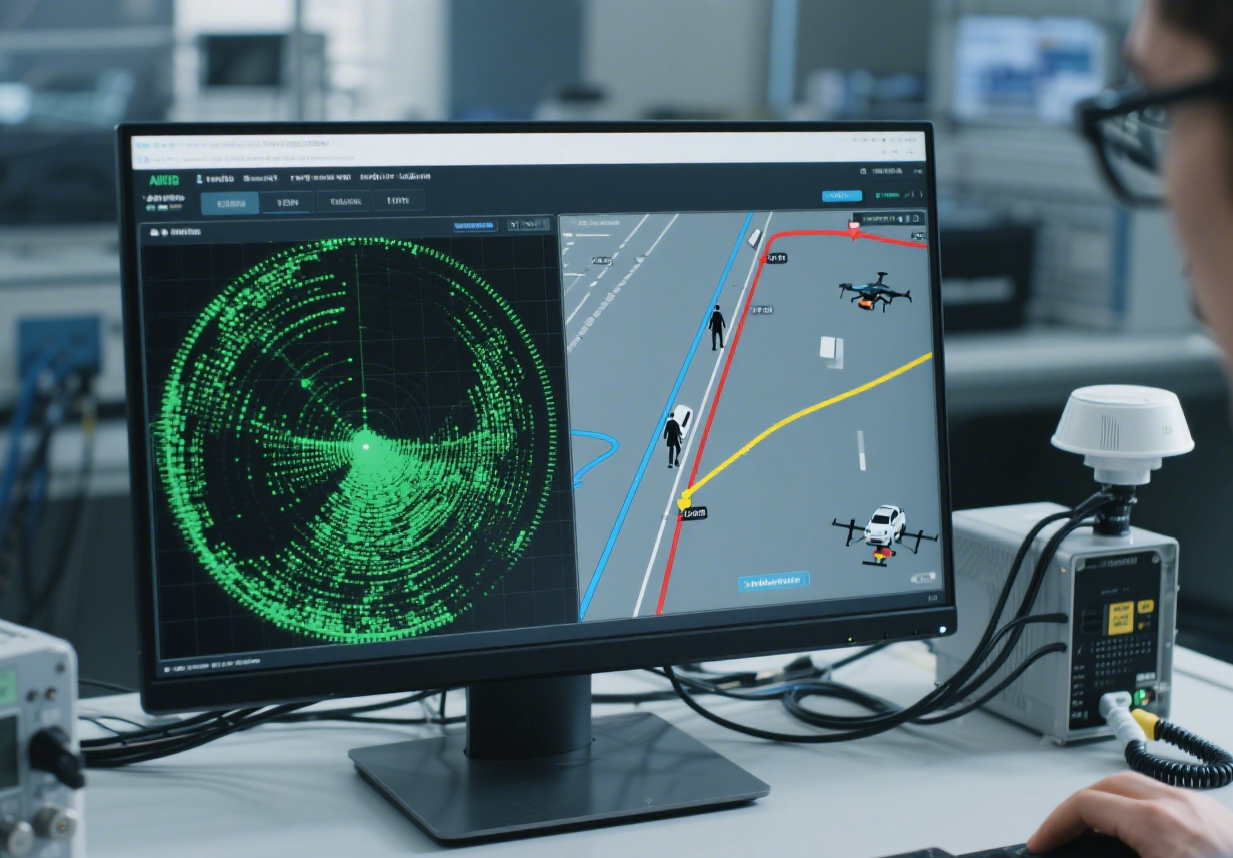Introduction
As UAVs and autonomous vehicles increasingly operate in dense environments, multi-target detection and interference mitigation have become critical technical challenges. Millimeter-wave (mmWave) radar offers a unique advantage over optical sensors, providing reliable detection regardless of weather, lighting, or cluttered surroundings.
This article examines the technical approaches to improving multi-target separation, clutter suppression, and interference mitigation in mmWave radar systems, highlighting how Linpowave’s radar solutions address these challenges.
1. Multi-Target Detection in Dense Environments
Technical Challenge
Urban airspaces and crowded roadways often present dozens of targets simultaneously. Detecting each object accurately requires high angular resolution and advanced signal processing to avoid misclassification or merged tracks.
Linpowave Solution
Linpowave’s U300 4D mmWave Radar for Drone incorporates MIMO antenna arrays and high-resolution 4D imaging algorithms to separate multiple moving objects in real time. Similarly, the V200 Vehicle 4D mmWave Radar excels in urban road scenarios, distinguishing closely spaced vehicles while maintaining accurate speed and distance estimation.
Value in Practice
-
Enables drone swarm operations without collision risk.
-
Supports lane-level vehicle tracking in smart traffic systems.
-
Enhances surveillance and security applications where multiple moving objects coexist.
2. Clutter Suppression and Environmental Interference
Technical Challenge
Reflections from stationary objects, road surfaces, or surrounding structures generate clutter, which can mask smaller targets. Interference from nearby radars in dense urban areas further complicates detection.
Linpowave Solution
Advanced adaptive filtering, Doppler analysis, and beamforming integrated in U300 and V200 modules help suppress clutter and distinguish real targets. These systems can dynamically adjust waveform patterns to minimize interference from other radars or reflective surfaces.
Real-World Applications
-
Urban UAV operations: Detecting moving objects in areas with buildings, trees, and other obstacles.
-
Traffic monitoring: Maintaining accurate vehicle detection in crowded intersections or highways.
-
Emergency response drones: Reliable tracking in complex disaster zones with debris and reflective surfaces.
3. High-Fidelity Velocity and Range Estimation
Technical Challenge
Simultaneous detection of multiple moving objects requires precise measurement of both distance and velocity, which is critical for collision avoidance and autonomous navigation.
Linpowave Solution
The 4D radar processing engine in U300 and V200 calculates range, velocity, azimuth, and elevation for each object in real time. By integrating FMCW signal processing and Doppler shift analysis, these radars achieve centimeter-level range resolution and high-speed accuracy.
Value in Practice
-
Ensures drones can navigate crowded urban airspaces safely.
-
Supports autonomous vehicle ADAS functions such as adaptive cruise control, collision warning, and lane-change assistance.
4. System Integration and Scalability
Technical Challenge
Radar modules must integrate seamlessly with UAV control systems, vehicle ECUs, or smart city infrastructure. Compatibility with communication protocols, power constraints, and sensor fusion frameworks is essential.
Linpowave Solution
-
U300: Lightweight and low-power design allows easy deployment on small drones with CAN or UART interfaces.
-
V200: Compact radar with modular software supports Ethernet and CAN, facilitating integration with traffic management systems.
Real-World Benefits
-
Deployable in large drone swarms or multi-vehicle networks.
-
Enables cloud-based sensor fusion for centralized traffic control or drone fleet monitoring.
5. Future Directions
-
AI-assisted radar processing: Deep learning applied to raw radar data can improve target classification and trajectory prediction.
-
4D imaging refinement: Increasing point-cloud density enhances situational awareness for both drones and vehicles.
-
Interoperability standards: Adoption of IEEE and ISO radar standards ensures safer, scalable deployment across multiple platforms.
Conclusion
Multi-target detection and interference mitigation are critical for autonomous UAVs and vehicles. Linpowave’s U300 and V200 demonstrate how advanced signal processing, 4D imaging, and robust hardware design address these challenges. By leveraging these radars, developers can achieve reliable detection in complex, cluttered, and dynamic environments.



